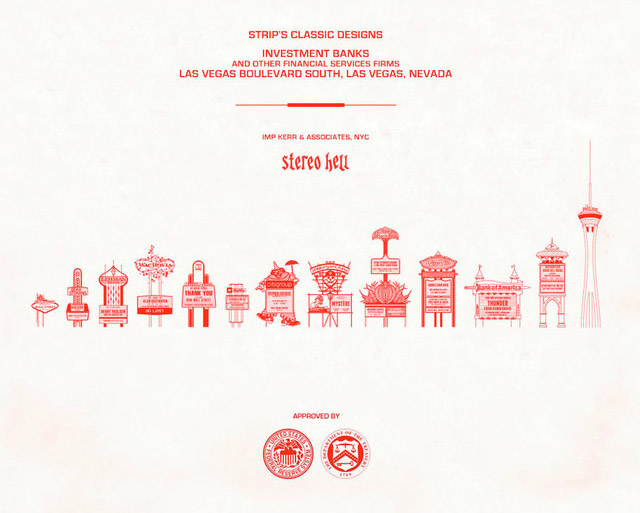‘Why is it that words like these seem dull and cold? Is it because there is no word tender enough to be your name?’ –James Joyce

A drug used as a general anaesthetic may also work as a remarkably rapid antidepressant, according to a preliminary study.
The drug’s hallucinogenic side effects mean it is unlikely to be prescribed to patients, but it could pave the way to new faster-acting antidepressants, the researchers suggest.
Ketamine is used as an animal tranquiliser, but is perhaps better known as an illicit street drug, sometimes called “special K”. Now researchers have found the drug can relieve depression in some patients within just 2 hours - and continue to do so for a week.
One problem with current antidepressants is that they typically take weeks to kick in. Some studies have found that patients may face a high risk of suicide in the first week after starting an antidepressant treatment because of this lag time. So researchers have been searching for alternative drugs.
Women want what they can’t have; men don’t know what they have until it’s gone.
‘All of our unhappiness comes from our inability to be alone.’ –La Bruyère
‘Love is the power to see similarity in the dissimilar.’ –Theodor Adorno
‘Women try their luck; men risk theirs.’ –Oscar Wilde
‘A woman may very well form a friendship with a man, but for this to endure, it must be assisted by a little physical antipathy.’ –Nietzsche
‘Well, I’d love to stay and chat, but you’re a total bitch.’ –Stewie Griffin
‘Love dies from disgust, and forgetfulness buries it.’ –La Bruyère
‘Nobody gets justice. People only get good luck or bad luck.’ –Orson Welles

The question of nutrition is closely related to that of locality and climate. None of us can live anywhere; and he who has great tasks to perform, which demand all his energy, has, in this respect, a very limited choice. The influence of climate upon the bodily functions, affecting their retardation or acceleration, is so great, that a blunder in the choice of locality and climate may not merely alienate a man from his duty, but may withhold it from him altogether, so that he never comes face to face with it. Animal vigor never preponderates in him to the extent that it lets him attain that exuberant freedom in which he may say to himself: I, alone, can do that. (…)
The slightest torpidity of the intestines, once it has become a habit, is quite sufficient to turn a genius into something mediocre, something “German;” the climate of Germany, alone, is more than enough to discourage the strongest and most heroic intestines. Upon the tempo of the body’s functions closely depend the agility or the slowness of the spirit’s feet; indeed spirit itself is only a form of these bodily functions. Enumerate the places in which men of great intellect have been and are still found; where wit, subtlety, and malice are a part, of happiness; where genius is almost necessarily at home: all of them have an unusually dry atmosphere. Paris, Provence, Florence, Jerusalem, Athens–these names prove this: that genius is dependent on dry air, on clear skies–in other words, on rapid organic functions, on the possibility of contenuously securing for one’s self great and even’s quantities of energy. I have a case in mind where a man of significant and independent mentality became a narrow, craven specialist, and a crank, simply because he had no feeling for climate. I myself might have come to the same end, if illness had not forced me to reason, and to reflect upon reason realistically.
Now long practice has taught me to read the effects of climatic and meteorological influences, from self-observation, as though from a very delicate and reliable instrument, so that I can calculate the change in the degree of atmospheric moisture by means of this physiological selfobservation, even on so short a journey as that from Turin to Milan; accordingly I think with horror of the ghastly fact that my whole life, up to the last ten years–the most dangerous years–has always been spent in the wrong places, places that should have been precisely forbidden to me. (…)
But it was ignorance of physiology–that confounded “Idealism”–that was the real curse of my life, the superfluous and stupid element in it; from which nothing good could develop, for which there can be no settlement and no compensation. The consequences of this “Idealism” explain all the blunders, the great aberrations of instinct, and the modest specializations which diverted me from my life-task; as, for instance, the fact that I became a philologist–why not at least a doctor or anything else that might have opened my eyes? During my stay at Basel, my whole intellectual routine, including my daily schedule, was an utterly senseless abuse of extraordinary powers, without any sort of compensation for the strength I spent, without even a thought of its exhaustion and the problem of replacement. I lacked that subtle egoism, the protection that an imperative instinct gives; I regarded all men as my equals, I was disinterested, I forgot my distance from others–in short, I was in a condition for which I can never forgive myself. When I had almost reached the end, simply because I had almost reached it, I began to reflect upon the basic absurdity of my life-ldealism. It was illness that first brought me to reason.
{ Nietzsche, Ecce Homo, 1888 }
photo { Reto Caduff }
‘A day without sunshine is like, you know, night.’ –Steve Martin

Personality impressions associated with four distinct humor styles
This study examined how personality impressions about another person are influenced by the style of humor that person displays. Four distinct styles were examined, with two of these being adaptive (affiliative and self-enhancing humor), and two being maladaptive (aggressive and self-defeating humor). Participants read descriptions of an individual displaying each humor style, and then rated that individual on several other personality attributes (e.g., friendly, complaining). The adaptive humor styles enhanced personality impressions of another individual, whereas the maladaptive styles had strong detrimental effects. Furthermore, participants provided clearly differentiated personality impressions within both the adaptive and maladaptive humor categories. Affiliative humor led to more positive impressions of another than self-enhancing humor; whereas aggressive humor resulted in more negative personality impressions than self-defeating humor. These findings were discussed in terms of approaches to humor that acknowledge the multifaceted nature of this construct and the resulting impact on social relationships.
{ University of Western Ontario, Canada | Scandinavian Journal of Psychology }
‘Despite the cost of living, it’s still popular.’ –Kathleen Norris
… something I’m quite interested in, and it’s related to the Cosmic Microwave Background (CMB). I’ve briefly mentioned the CMB before, but here’s a more decent introduction: when we say CMB we are talking about radiation that was created when the Universe was very very young - around 300,000 years old. At that time the Universe was hot and radiation (or photons) were the dominant component of the Universe. Because it was so hot at that time, the Universe was actually opaque – matter was ionized, meaning electrons were bobbling about not really being attached to any nuclei because of the high temperature. What this means is that photons could not get very far without bumping into something – they could not travel in a straight line for any decent sort of time, and were perpetually scattered around. That’s essentially what opaque means. However, something special happened around 300,000 years into the Universe’s lifetime, and that was a decrease in temperature that allowed these electrons to settle into atoms, effectively setting the photons free. We call this the time of last-scattering.
‘And on the eighth day, the Lord God said Let there be boogie!‘ –G.E. Nordell

I bought a Stereo! Wow! With two speakers!
But then I heard the quad with the four speakers and I was like this is it, so I got rid of the stereo and got the quad.
I’m listening to this thing and I’m like “Hey this sounds like SHIT!”
So, I got rid of that and got the dodecaphonic with the 12 speakers.
This was more to my liking…for a while.
But the ear gets pretty sophisticated pretty fast and I got rid of that and got the milliphonic with the 1,000 speakers.
And I’m listening to that one and I’m like, “Hey, this sounds like SHIT too! The other one was SHIT one, this one is SHIT too!”
So, I traded that in and got the googlephonic, which is the highest number of speakers you can have before infinity.
Sounds like SHIT!
So, then I said, “Hey, maybe it’s the needle!”
I had the typical diamond needle. I searched around got the moonrock needle, cost me 3 million bucks, but what the hey. So, now I have a googlephonic stereo with a moonrock needle.
It’s okay for a car stereo, I wouldn’t want it in my house.
{ Steve Martin }
logotype { House Industries }
I don’t like to wear deodorant and don’t mind the smell, but there’s no excuse for bad breath
For better or for worse, science has long been married to mathematics. Generally it has been for the better. Especially since the days of Galileo and Newton, math has nurtured science. Rigorous mathematical methods have secured science’s fidelity to fact and conferred a timeless reliability to its findings.
During the past century, though, a mutant form of math has deflected science’s heart from the modes of calculation that had long served so faithfully. Science was seduced by statistics, the math rooted in the same principles that guarantee profits for Las Vegas casinos. Supposedly, the proper use of statistics makes relying on scientific results a safe bet. But in practice, widespread misuse of statistical methods makes science more like a crapshoot.
It’s science’s dirtiest secret: The “scientific method” of testing hypotheses by statistical analysis stands on a flimsy foundation. Statistical tests are supposed to guide scientists in judging whether an experimental result reflects some real effect or is merely a random fluke, but the standard methods mix mutually inconsistent philosophies and offer no meaningful basis for making such decisions. Even when performed correctly, statistical tests are widely misunderstood and frequently misinterpreted. As a result, countless conclusions in the scientific literature are erroneous, and tests of medical dangers or treatments are often contradictory and confusing.
MDMA got you feelin’ like a champion, the city never sleeps, better slip you an Ambien

That post was about sleep researcher Jerry Siegel, who argues that sleep evolved as a state of “adaptive inactivity”. According to this idea, animals sleep because otherwise we’d always be active, and constant activity is a waste of energy. Sleeping for a proportion of the time conserves calories, and also keeps us safe from nocturnal predators etc.
Siegel’s theory in what we might call minimalist. That’s in contrast to other hypotheses which claim that sleep serves some kind of vital restorative biological function, or that it’s important for memory formation, or whatever. It’s a hotly debated topic. (…)
Dreams are simply a result of the “awake-like” forebrain - the “higher” perceptual, cognitive and emotional areas - trying to make sense of the input that it’s receiving as a result of waves of activation arising from the brainstem. A dream is the forebrain’s “best guess” at making a meaningful story out of the assortment of sensations (mostly visual) and concepts activated by these periodic waves. There’s no attempt to disguise the shameful parts; the bizarreness of dreams simply reflects the fact that the input is pretty much random. (…)
While Hobson’s theory is minimalist in that it reduces dreams, at any rate in adulthood, to the status of a by-product, it doesn’t leave them uninteresting. Freudian dream re-interpretation is probably ruled out (”That train represents your penis and that cat was your mother”, etc.), but if dreams are our brains processing random noise, then they still provide an insight into how our brains process information. Dreams are our brains working away on their own, with the real world temporarily removed.
‘Everything you can imagine is real.’ –Picasso

{ Spring/Summer 1999, Mcqueen ended his show w/ model Shalom Harlow standin’ in a white dress on a rotatin’ platform, bein’ spray painted by robotic arms. }
‘Never go to bed mad. Stay up and fight.’ –Phyllis Diller
First, while the Mexican government has lost control over matters having to do with drugs and with the borderlands of the United States, Mexico City’s control over other regions — and over areas other than drug enforcement — has not collapsed (though its lack of control over drugs could well extend to other areas eventually). Second, while drugs reshape Mexican institutions dramatically, they also, paradoxically, stabilize Mexico. We need to examine these crosscurrents to understand the status of Mexico.
Let’s begin by understanding the core problem. The United States consumes vast amounts of narcotics, which, while illegal there, make their way in abundance. Narcotics derive from low-cost agricultural products that become consumable with minimal processing. With its long, shared border with the United States, Mexico has become a major grower, processor and exporter of narcotics. Because the drugs are illegal and thus outside normal market processes, their price is determined by their illegality rather than by the cost of production. This means extraordinary profits can be made by moving narcotics from the Mexican side of the border to markets on the other side.
Whoever controls the supply chain from the fields to the processing facilities and, above all, across the border, will make enormous amounts of money. Various Mexican organizations — labeled cartels, although they do not truly function as such, since real cartels involve at least a degree of cooperation among producers, not open warfare — vie for this business. These are competing businesses, each with its own competing supply chain.
Typically, competition among businesses involves lowering prices and increasing quality. This would produce small, incremental shifts in profits on the whole while dramatically reducing prices. An increased market share would compensate for lower prices. Similarly, lawsuits are the normal solution to unfair competition. But neither is the case with regard to illegal goods.
The surest way to increase smuggling profits is not through market mechanisms but by taking over competitors’ supply chains. Given the profit margins involved, persons wanting to control drug supply chains would be irrational to buy, since the lower-cost solution would be to take control of these supply chains by force. Thus, each smuggling organization has an attached paramilitary organization designed to protect its own supply chain and to seize its competitors’ supply chains.
The result is ongoing warfare between competing organizations. Given the amount of money being made in delivering their product to American cities, these paramilitary organizations are well-armed, well-led and well-motivated. Membership in such paramilitary groups offers impoverished young men extraordinary opportunities for making money, far greater than would be available to them in legitimate activities.
The raging war in Mexico derives logically from the existence of markets for narcotics in the United States; the low cost of the materials and processes required to produce these products; and the extraordinarily favorable economics of moving narcotics across the border. This warfare is concentrated on the Mexican side of the border. But from the Mexican point of view, this warfare does not fundamentally threaten Mexico’s interests.
‘Tell the truth and run.’ –George Seldes

{ Elliott waves. Bull Market: Left to centre. Bear Market: Right to centre. | The Elliott Wave Principle is a detailed description of how financial markets behave. The description reveals that mass psychology swings from pessimism to optimism and back in a natural sequence, creating specific wave patterns in price movements. Each pattern has implications regarding the position of the market within its overall progression, past, present and future. | Wikipedia | Continue reading }
‘In a closed society where everybody’s guilty, the only crime is getting caught.’ –Hunter S. Thompson
…most of the headlines were about the wrong e-mails. When Goldman Sachs employees bragged about the money they had made by shorting the housing market, it was ugly, but that didn’t amount to wrongdoing.
No, the e-mail messages you should be focusing on are the ones from employees at the credit rating agencies, which bestowed AAA ratings on hundreds of billions of dollars’ worth of dubious assets, nearly all of which have since turned out to be toxic waste. And no, that’s not hyperbole: of AAA-rated subprime-mortgage-backed securities issued in 2006, 93 percent — 93 percent! — have now been downgraded to junk status.
What those e-mails reveal is a deeply corrupt system. And it’s a system that financial reform, as currently proposed, wouldn’t fix.
The rating agencies began as market researchers, selling assessments of corporate debt to people considering whether to buy that debt. Eventually, however, they morphed into something quite different: companies that were hired by the people selling debt to give that debt a seal of approval.
Those seals of approval came to play a central role in our whole financial system, especially for institutional investors like pension funds, which would buy your bonds if and only if they received that coveted AAA rating.
Exciting, hmmm? At least in theory.

Silicon photonics could save the computer industry
The future of computing may need a light touch – literally. As chips move more and more data around, the metallic wiring on and between them eventually won’t be able to keep up.
The solution may be silicon photonics, a technology that employs silicon as an optical material. If compatible with standard CMOS semiconductor processing, silicon photonics promises inexpensive optical devices, easy integration with electronics and speedy data delivery.
First, though, researchers must grapple with a variety of issues, including reducing the cost to virtually nothing and finding ways to overcome a basic material drawback.
“The fundamental problem is silicon doesn’t emit light. It’s an indirect bandgap material,” said John Bowers, a leading researcher in the field and a professor of electrical and computer engineering at the University of California, Santa Barbara.
photo { Stephen Gelb }
Half baked they look: hypnotised like. Eyes front. Mark time. Table: able. Bed: ed.
In the Talmud, he is called “ish gam zu” (the man of “gam zu”); and this name is explained as referring to Nahum’s motto.
It is said that on every occasion, no matter how unpleasant the circumstance, he exclaimed “Gam zu letovah” (This, too, will be for the best). (…)
It is related that in later years Nahum’s hands and feet became paralyzed, and he was afflicted with other bodily ailments. He bore his troubles patiently, however, and even rejoiced over them.
{ Wikipedia | Continue reading }
Amor fati is a Latin phrase coined by Nietzsche loosely translating to “love of fate” or “love of one’s fate.” It is used to describe an attitude in which one sees everything that happens in one’s life, including suffering and loss, as good. That is, one feels that everything that happens is destiny’s way of reaching its ultimate purpose, and so should be considered good. Moreover, it is characterized by an acceptance of the events or situations that occur in one’s life. It is almost identical to the Jewish concept of “Gam zu letovah” (this, too, is for the best).
Won’t last. Always passing, the stream of life, which in the stream of life we trace is dearer than them all.

{ John Clang }
















